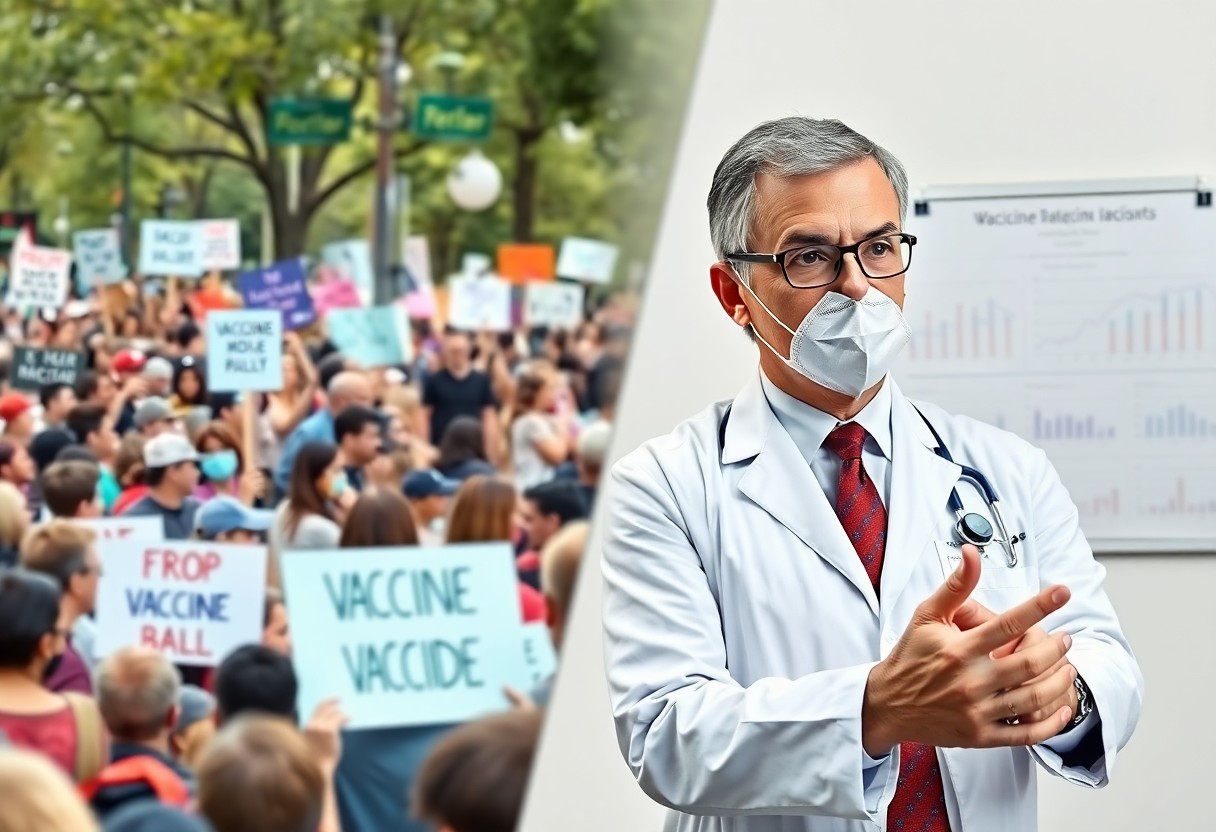SIRVA, or Shoulder Injury Related to Vaccine Administration, can drastically affect your life following a routine vaccination. Understanding the risks and outcomes associated with improper injection techniques is necessary for your health. In this blog post, you will explore real-life horror stories that demonstrate how a seemingly harmless shot can lead to debilitating pain and long-term consequences. By learning more about SIRVA, you can take steps to protect yourself and advocate for proper vaccination practices that ensure your well-being.
Understanding SIRVA
To grasp the complexities of SIRVA, or Shoulder Injury Related to Vaccine Administration, it is important to recognize how a seemingly harmless injection can lead to significant, long-term discomfort. This condition typically arises due to improper injection techniques, impacting the shoulder area and causing various symptoms like pain and immobility. Becoming aware of SIRVA will help you take informed steps toward prevention and management.
Definition of SIRVA
To define SIRVA, it is characterized by the onset of shoulder pain that occurs following a vaccine injection in the deltoid region. This condition results from inflammation or injury to the surrounding tissues and can significantly affect your quality of life and physical function.
Causes of SIRVA
One common cause of SIRVA is improper vaccine administration, where the injection may be delivered too high or too deeply into the shoulder muscle. The risk increases if the individual has anatomical variations or tight muscle structures in the shoulder area.
A deeper understanding of the causes of SIRVA reveals that the angle, depth, and location of the injection are vital factors. A misplaced needle can lead to damage in sensitive tissues such as the rotator cuff, resulting in inflammation and chronic pain. Furthermore, underlying conditions, such as previous shoulder injuries, may exacerbate your risk of developing SIRVA. Awareness of these causes is crucial for both healthcare providers and patients to ensure that vaccinations are administered safely, mitigating the likelihood of developing this painful condition.
Symptoms and Diagnosis
While experiencing SIRVA, you may find the symptoms vary widely but can significantly affect your daily life. It’s important to recognize these indicators early to seek appropriate treatment and potentially mitigate the long-term effects.
Common Symptoms
Among the most prevalent symptoms of SIRVA, you may notice persistent shoulder pain, limited range of motion, and tenderness at the injection site. These issues can be accompanied by swelling and a sensation of warmth in the affected area, making routine activities increasingly challenging.
Diagnostic Procedures
Before a diagnosis can be established, your healthcare provider will conduct a thorough assessment, which may include a physical examination and a review of your medical history. Diagnostic imaging, such as an MRI, can help identify any underlying injuries to your shoulder structures.
Procedures involved in diagnosing SIRVA often encompass an examination of your shoulder’s function and, in some cases, advanced imaging technologies to rule out other potential conditions. Your physician may also recommend nerve conduction studies or assessments of inflammation levels in your body. Each procedural step aims to clarify the extent of your condition, guiding your healthcare team toward effective treatment options tailored to your needs.
Case Studies of SIRVA Impact
You may be surprised to learn about the extent of the impact SIRVA can have on individuals. Here are some compelling case studies showcasing the outcomes:
- Case Study 1: A 35-year-old woman experienced chronic pain for 18 months following an influenza vaccine.
- Case Study 2: A 42-year-old man reported physical therapy costs exceeding $15,000 due to long-term shoulder dysfunction.
- Case Study 3: A 29-year-old with SIRVA lost over six weeks of work, affecting earnings by approximately $5,000.
Personal Accounts
Below are personal stories from individuals who have faced the challenges of SIRVA. Their experiences highlight not only the physical pain but also the ongoing struggles they endure daily.
Psychological Effects
Accounts from individuals with SIRVA indicate that the ramifications extend beyond physical ailments. Many report feelings of isolation, anxiety, and depression due to chronic pain and lifestyle changes.
To fully grasp SIRVA’s aftermath, it’s imperative to recognize the psychological toll this condition can impose. Individuals often struggle with anxiety and depression, stemming from uncertainty about full recovery and the changes to their daily lives. The social stigma surrounding vaccine-related injuries may also contribute to feelings of isolation, leading to a compound effect on mental well-being. These emotional challenges can be as debilitating as the physical ones, creating a cycle of distress that requires comprehensive care.
Treatment Options
For those suffering from SIRVA, various treatment options exist that can help alleviate pain and restore function. These options may include medical interventions, physical therapy approaches, and lifestyle modifications tailored to your specific needs. Understanding these treatments can significantly improve your quality of life as you navigate the challenges of this condition.
Medical Interventions
Above all, medical interventions may play a pivotal role in managing your SIRVA symptoms. Depending on the severity of your condition, your healthcare provider may recommend anti-inflammatory medications, corticosteroid injections, or even surgical options in some cases. These treatments aim to reduce pain and inflammation, helping you regain mobility and functionality.
Physical Therapy Approaches
The incorporation of physical therapy can be beneficial in your recovery journey. A physical therapist will design a personalized rehabilitation program focusing on exercises that improve strength, flexibility, and range of motion in your affected shoulder.
In addition to standard therapy techniques, you may also explore manual therapy, ultrasound therapy, and electrical stimulation to enhance recovery. These specialized treatments can help relieve pain and promote healing in your shoulder area. It’s important to be proactive in your therapy sessions and communicate openly with your therapist about your progress and any changes in your symptoms. By doing so, you increase your likelihood of achieving a successful recovery and can regain your normal activities sooner.

Prevention Strategies
Despite the potential risks associated with SIRVA, you can take proactive steps to minimize these dangers. Ensuring that you receive vaccinations from qualified healthcare professionals who understand the importance of technique can greatly enhance your safety. Additionally, being aware of your own anatomy and communicating any concerns can help mitigate the risks associated with improper injections.
Proper Injection Techniques
Around 80% of SIRVA cases are linked to improper injection techniques. It is necessary that you understand how important it is for your healthcare provider to use precise methods. This includes choosing the correct site and angle for the injection, as well as being aware of your muscle size and anatomy to avoid potential complications.
Patient Education
Patient education plays a significant role in reducing SIRVA cases. You should be informed about the risks associated with injections and recognize that your active participation in the process is vital for your safety.
Also, knowing how to identify symptoms of SIRVA, such as persistent pain or limited mobility in the shoulder, can empower you to seek timely medical attention. Awareness of the importance of proper injection techniques and understanding your anatomy will not only help you make informed decisions but can also lead to a more positive healthcare experience. Engaging in discussions with your healthcare provider about their practices ensures that your safety and well-being are prioritized throughout your treatment journey.
The Role of Healthcare Providers
Unlike many other medical issues, the potential for SIRVA significantly hinges on healthcare providers’ actions during vaccinations. It is crucial for practitioners to recognize the risks associated with incorrect injection techniques and to ensure they are not only properly trained but also vigilant in monitoring patients following administration. When healthcare providers prioritize patient safety, they play a vital role in preventing the adverse effects of SIRVA.
Importance of Awareness
Providers must remain fully aware of the signs and symptoms of SIRVA to address complications promptly. Educating yourself on the implications of injection site reactions can empower you to seek the necessary support should issues arise after receiving a vaccination.
Best Practices for Prevention
Across various healthcare settings, implementing standardized protocols for vaccine administration can notably reduce the incidence of SIRVA. Ensuring the correct angle, depth, and site of injection is crucial in minimizing complications.
In fact, utilizing proper techniques such as administering injections at the correct site and selecting appropriate needle sizes can prevent injuries to surrounding tissues. Training healthcare workers to recognize anatomical landmarks for safe injection can also mitigate risks. Encouraging patients to report any discomfort post-vaccination allows for early intervention, ensuring that any signs of SIRVA are addressed quickly and effectively, thus safeguarding your well-being.
To wrap up
Conclusively, it is crucial for you to understand the serious ramifications that a seemingly simple injection can have, particularly in the context of SIRVA. Awareness of the potential complications can help you make informed decisions and advocate for your health. The horror stories surrounding SIRVA serve as a cautionary tale, underscoring the need for careful consideration and proper technique during vaccinations. Your vigilance can be a protective measure against adverse effects, ensuring that you maintain your well-being and avoid unnecessary suffering.



















